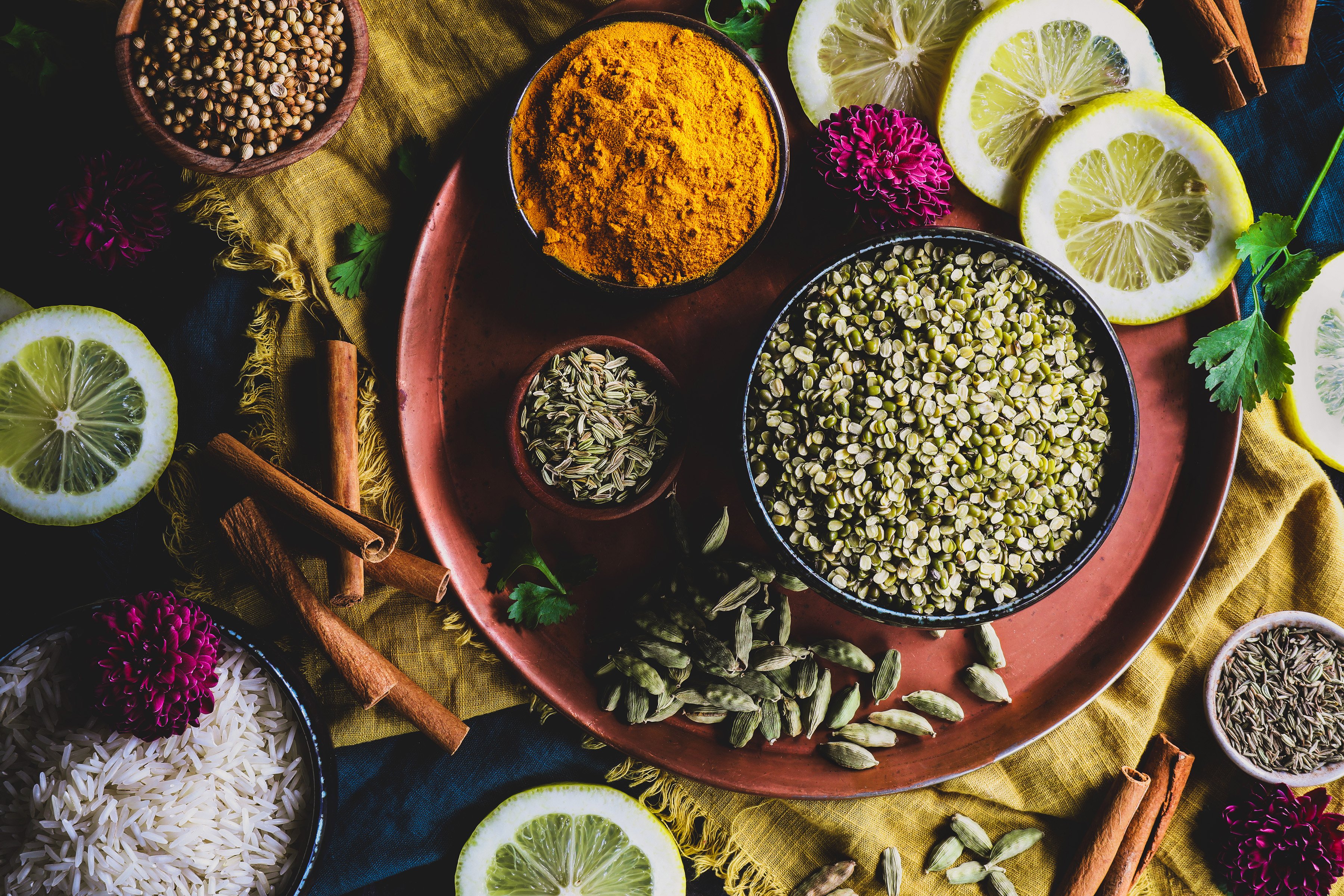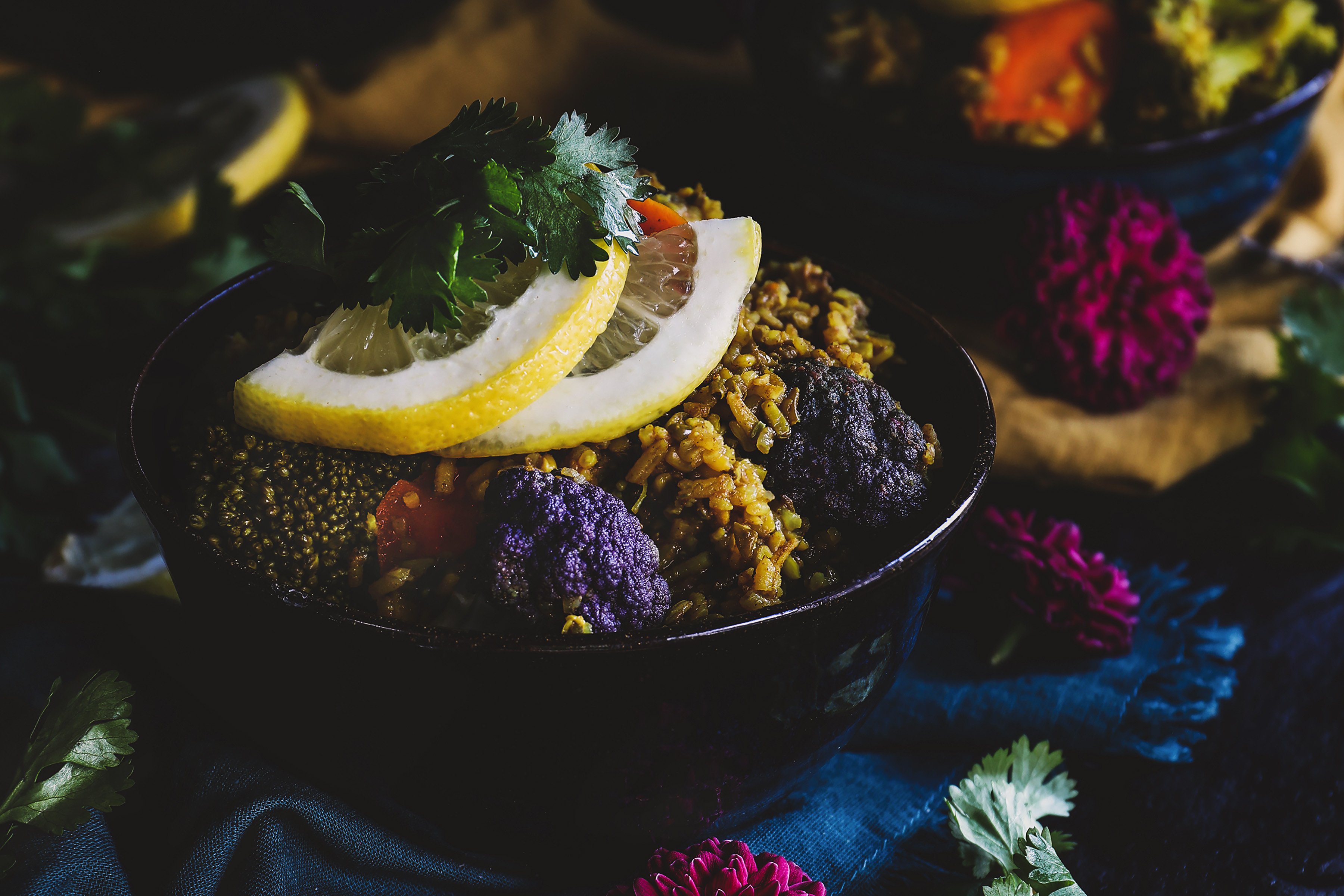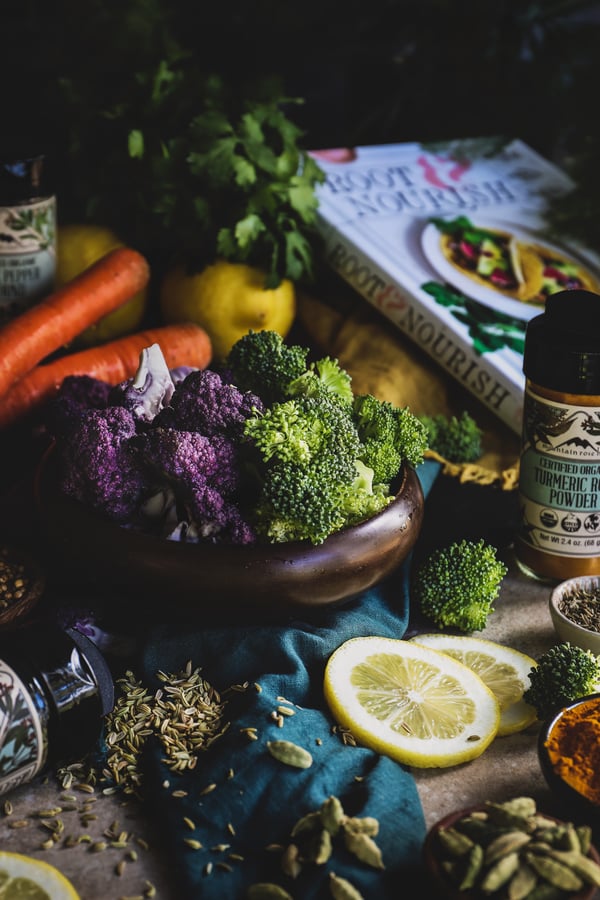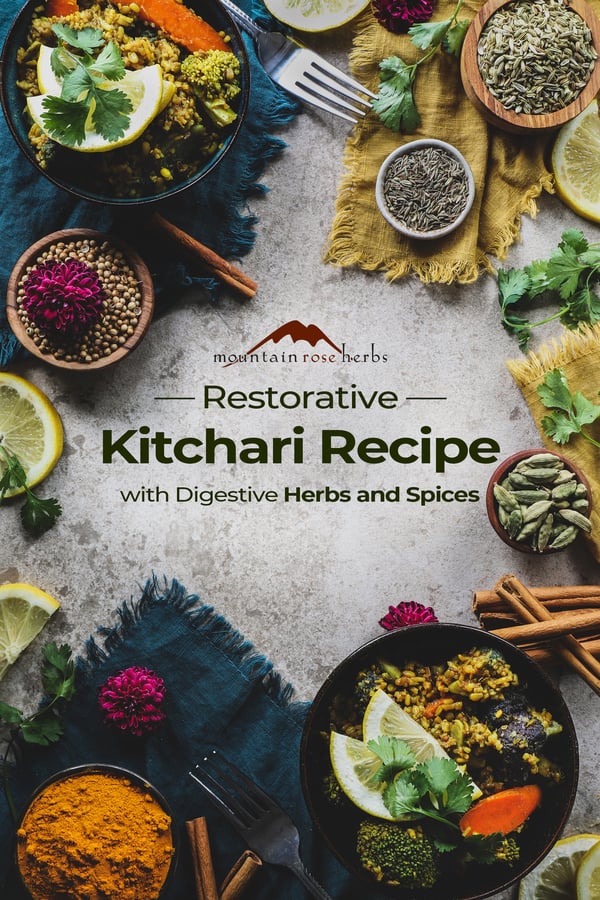We are “microcosms of the macrocosm” according to Ayurvedic philosophy—an eloquent way of describing our interconnectedness with the natural world. While technology and other changes in our society have created a separation between us and nature’s rhythms, the body’s incredible intelligence easily “remembers” its synchronicity with the macrocosm when we give it a chance. One way of creating this opportunity is by honoring the changes of the season, which Ayurveda describes as a moment in time when the system (micro- and macrocosm) is more vulnerable to illness because of the shifts in dominant energies and elements. Most of us naturally do this in some form or another—changing our wardrobe, adjusting to a new schedule for work or school, etc.—but we can take our seasonal self-care one step further by giving our digestive system some space and ease with a seasonal reset.
Traditionally, an Ayurvedic seasonal reset is based on a dish called kitchari, which is eaten as a monodiet for one or several days. The main ingredients of kitchari—white basmati rice and moong dal (split mung beans)—are extremely easy to digest, since the tough outer shell of the rice (which is left intact in brown rice) is removed and the tiny dal kernels are already split. Essentially, much of the work your body would need to do to digest the dish is already done for you, so the nutritious carbohydrates and proteins can get into your system without asking too much of your GI tract. This is beneficial during a seasonal shift, because the body is busy trying to adjust to new external conditions that are also changing internally. During the summer-to-fall transition, for instance, the dry, hot qualities of pitta dosha, which characterizes summer, turn over into the dry, cool qualities of vata dosha, which characterizes fall. Just as you might feel a little overwhelmed on the first brisk day of fall, your body can experience a kind of whiplash when temperatures drop and the wind picks up suddenly. Cushioning that blow with easily digestable food like kitchari will ensure that the body has enough nourishment and, in the case of these seasons, moist and grounding qualities that will help bring balance to both doshas. Rather than whiplash, the internal change of seasons feels more like a smooth, gradual curve along the side of a hill.
Besides the base ingredients, spices and herbs play a starring role in supporting digestive and whole-system health. Turmeric, one of the best anti-inflammatory herbs*, gets mixed into the grains and is given a nice, slow simmer. Hing, a traditional Indian spice ground from a dried plant resin, removes the potential gassiness of the beans and lentils. And Ayurveda’s triple threat—coriander, cumin, and fennel—form the base of the tarka, a tempering of spices that lets their volatile oils bloom on their own before they’re mixed into a dish.
As with all Ayurvedic medicine, the properties of these spices can be adjusted according to your taste and digestion—use less if you’re feeling very irritated, overheated, or if you’re new to Indian cooking. The same goes for the vegetables: start with no vegetables, or fewer of them, if you are feeling very imbalanced, and add more as you begin to feel better. If you are enjoying kitchari as part of an at-home reset, this complete recipe will last you for 1 or 1 1/2 days’ worth of meals (depending on how hungry you are!). In addition to simplifying your diet, you can also preserve your energy by limiting other activities (work, socializing, exercise) and enjoy more periods of rest and relaxation.
If you’re looking for a more in-depth and personalized approach to seasonal resets this fall—from kitchari to yoga practices, pranayama, and Ayurvedic self-care rituals—join me for a 10-day guided program starting October 6, 2022. You can learn more and register here.
Restorative Kitchari Recipe
Serves 4.
Ingredients
- 1/2 cup uncooked white basmati rice, soaked for 30 minutes
- 1/2 cup dried moong dal (split mung beans), rinsed
- 1 teaspoon organic turmeric powder
- 3/4 teaspoon sea salt
- 1/4 teaspoon hing
- 1 organic cinnamon stick, or 1 teaspoon organic ground cinnamon
- 6 whole organic cardamom pods, lightly crushed, or 1/2 teaspoon organic cardamom powder
- Water for cooking
- 2 to 6 cups chopped mixed vegetables (carrots, broccoli, spinach, cauliflower, and/or sweet potato, chopped into small, even pieces; optional)
Tarka
- 1 1/2 teaspoons organic cumin seeds
- 1 1/2 teaspoons organic coriander seeds
- 1/2 teaspoon organic fennel seeds
- 1 tablespoon ghee or organic extra virgin olive oil
- 1/2 tablespoon grated fresh ginger (or 1 teaspoon organic ginger powder)
To Serve
- 1/2 cup chopped fresh cilantro
- 1 lime or lemon, cut into wedges
- Sea salt
- Organic black pepper
Directions
- Drain the rice, then rinse it two or three times, until the water runs clear.
- Combine the rice, dal, turmeric, salt, hing, cinnamon, and cardamom in a large pot and add 4 cups water. Bring to a boil over medium heat, then reduce the heat to low. Cover and simmer, without stirring, for 20 minutes. Check periodically to see if the kitchari is drying out; if it is, add 1 cup more water.
- Meanwhile, make the tarka: Lightly grind the cumin, coriander, and fennel seeds with a mortar and pestle, or gently crush between your two hands.
- Warm the ghee or oil in a skillet over medium heat for about 1 minute. Add the ground spices and the ginger, and stir to coat. Reduce the heat to low. Cook until the spices are fragrant, 3-5 minutes. Be sure to watch the tarka, as the spices can burn easily. Remove from heat and set aside.
- After cooking kitchari for about 20 minutes, add optional vegetables to the pot. Stir gently to combine, and cover for another 10-15 minutes, until the dal and vegetables are very soft, like a porridge.
- Add the tarka to the pot and stir to combine.
- Serve with the cilantro and a squeeze of lemon or lime juice, and season with salt and pepper, as desired.
Adapted from ROOT & NOURISH: An Herbal Cookbook for Women’s Wellness by Abbey Rodriguez and Jennifer Kurdyla. Copyright © 2021 Simon & Schuster, Inc. Reprinted by permission of Tiller Press, a Division of Simon & Schuster, Inc.
Looking for more ayurvedic-inspired content?
Find More Recipes and Information From Jennifer Kurdyla Here!
You May Also Be Interested In
- Adaptogenic Mushroom Risotto (From the Root & Nourish Cookbook)
- Supporting the Microbiome Through Diet
- Best Herbs for Digestion + Recipes















